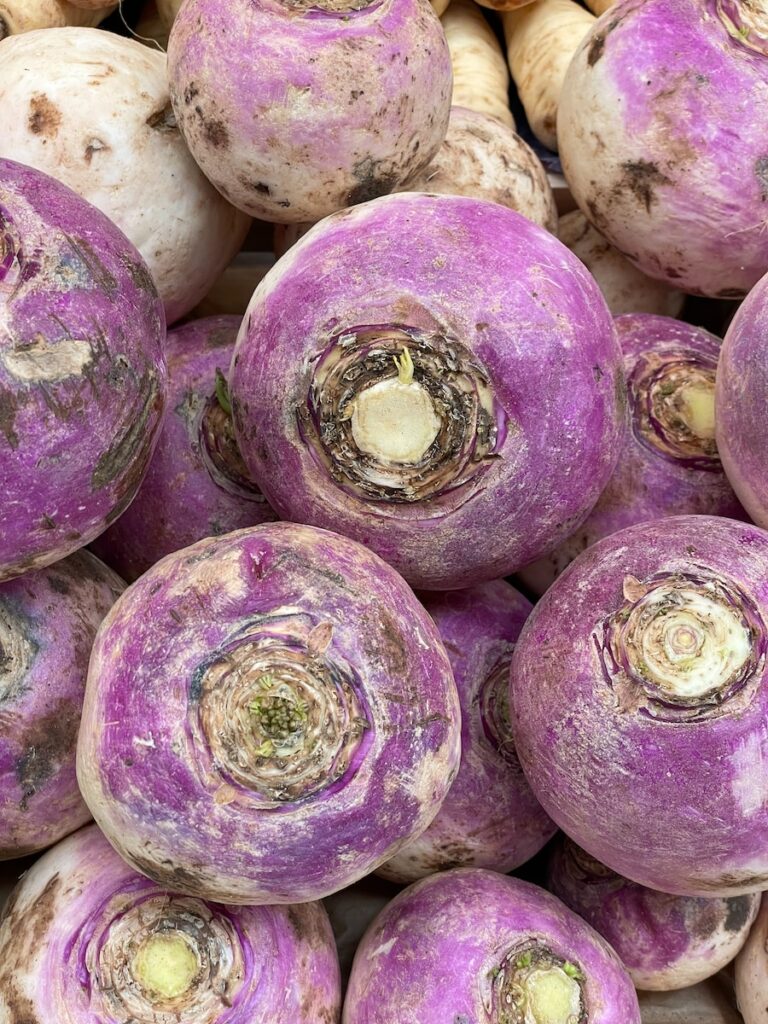When to plant turnips in Alabama
Turnips are an often underrated vegetable that can be a delicious and nutritious addition to any garden. Whether you’re growing them for the first time or have been cultivating them for years, understanding when to plant turnips in Alabama is essential for successful harvesting. This article will explain the necessary steps for growing turnips in Alabama. With the right conditions, turnips can be a tasty addition to your home-grown vegetables!
Many try to grow turnips during the Summer, but we would advise against it due to high temperatures and pest pressure. Just feeding worms during the Summer!
What are Turnips
Turnips are a root vegetable with a unique sweet and earthy flavor. When eaten raw, they have a crisp texture; when cooked, they become soft and tender. This makes them ideal for various dishes, such as roasting, boiling, or braising.
Nutritionally speaking, turnips offer many benefits. They are high in vitamin C, fiber, and potassium while still low in calories and fat. These nutrients help improve the health of all body systems, including the digestive and immune systems. Additionally, turnips are rich in antioxidant compounds, which can protect cells from damage caused by free radicals.
Turnip greens can also be harvested during the season before roots are harvested. Their leaves can also be consumed as a nutritious green vegetable! The leaves are packed with essential vitamins A and K and minerals like calcium and iron. They also contain beneficial phytochemicals that may have anti-inflammatory properties, which could be helpful to overall health.
Turnips are an incredibly versatile fall vegetable that can easily fit into any diet due to its delicious taste and impressive nutritional profile! From salads to soups to side dishes – there’s no limit to how you can enjoy this delicious root vegetable!

Climate and soil requirements for growing turnips in Alabama
Growing turnips in Alabama requires a particular climate and soil type for success. The ideal climate for turnips is cool, with mild temperatures that don’t dip below freezing or rise above 80°F. Turnips also require light, well-drained soil with a pH between 5.5 and 6.5. Plant them in an area with at least six hours of sunlight daily. Choose an early spring or late fall time when temperatures are milder, and there is less risk of drought or frost damage.
To prepare the garden bed for planting, weed and break up large clumps of soil before adding compost or manure. Turnips should be planted about one inch deep in the soil, four inches apart. Plant and water them regularly until they’re ready to be harvested, about two months later.
Be mindful of pests and diseases that can damage turnips and Blackleg, which can cause rotting roots and stunted growth. To prevent problems, always plant different vegetables in different parts of your garden every year. Also, check your plants often for signs of pests or diseases.
Follow these guidelines to grow turnips in Alabama, which are delicious and nutritious! With the right conditions, turnips can be a delightful addition to your garden while providing essential vitamins and minerals with few calories.
Planting the seeds and caring for your turnip crop
Growing turnips in Alabama is a rewarding experience, but it requires careful preparation. Planting the seeds at the right time and in the ideal conditions is essential for a successful harvest. The optimal season to sow turnip seeds is late summer or early fall when temperatures stay mild, and soil temperatures range between 65-70°F. To plant, use a hoe or trowel to make rows 2 inches deep and 6 inches apart. Then, once the seedlings reach 4-6 inches tall, thin them out so the plants are spaced 4-6 inches apart.
Caring for your turnips during their growth period is equally important. Keep the soil moist by watering regularly, yet be sure not to overwater, as this could lead to root rot. Fertilize with a balanced fertilizer every few weeks and spread mulch around your plants to help keep moisture and discourage weeds. Pests and diseases can harm plants, so be careful. Look for holes in leaves or stems, wilting, discoloration, and spots on foliage. These may need treatment with organic methods like neem oil or insecticidal soap. Remove any diseased plants from the garden right away.
With these planting and care tips followed correctly in Alabama, you can look forward to harvesting nutrient-rich turnips throughout the season!
Harvesting and storing turnips from your garden
Harvesting and storing turnips from your garden is essential to enjoying this delicious and nutritious vegetable. When the root has reached a diameter of 2-3 inches, it is time to harvest. To ensure you have maximum flavor, try to pick your turnips as soon as they are mature.
The tops can be cut off for turnip greens, which some say taste better after a light frost. This helps to sweeten the leaves and reduce their bitterness. If you want to use the greens, keep at least two inches of stem attached when harvesting the root.
Turnip roots should be stored in a dry, cool place such as a root cellar or refrigerator and can last up to 3 months under ideal conditions. Keep them fresh by brushing or washing with cold water. Then, store them in airtight containers or plastic bags in the refrigerator crisper.
While storing turnips, check for wilted foliage, soft spots on the root, or slime on its surface. These are signs that turnips aren’t good to eat anymore.
If you use these guidelines for harvesting and keeping turnips from your Alabama garden, you can have the pleasure of consuming this delicious vegetable all season!
Common pests, diseases, and other challenges to growing turnips in Alabama
Growers must know potential problems with turnips in Alabama, such as pests, diseases, and challenges. Flea beetles are the most common pest in the area and can cause extensive damage to the leaves if not controlled. Southern blight is a fungal disease that can occur in warm and wet conditions, so proper ventilation and monitoring are vital to preventing its spread. It should also be treated with fungicides as soon as signs of infection are noticed.
Cold temperatures can kill turnip crops. To make sure they don’t die, plant them when the soil is between 45–75°F. Regular maintenance issues, like over- or under-watering, can lead to stunted growth, leaf damage, disease, and other problems. It would be best to ensure plants get enough water without becoming waterlogged. Rotation of crops every two to three years will also help reduce disease risk.
Weeds compete with your turnips for nutrients. Hoeing or hand-weeding around each plant will help provide optimal growth. Additionally, regular inspection for pests or signs of disease development is essential–if an infestation occurs, you should act quickly before it spreads further. Finally, organic fertilizers such as compost or manure may improve yields and avoid harsh chemicals that could harm beneficial insects or pollinators.
With proper care and attention, turnips have the potential to become a delicious and nutritious addition to your garden in Alabama! By taking preventive measures, like crop rotation and regular inspections, you can maximize their yield and avoid potential problems.
